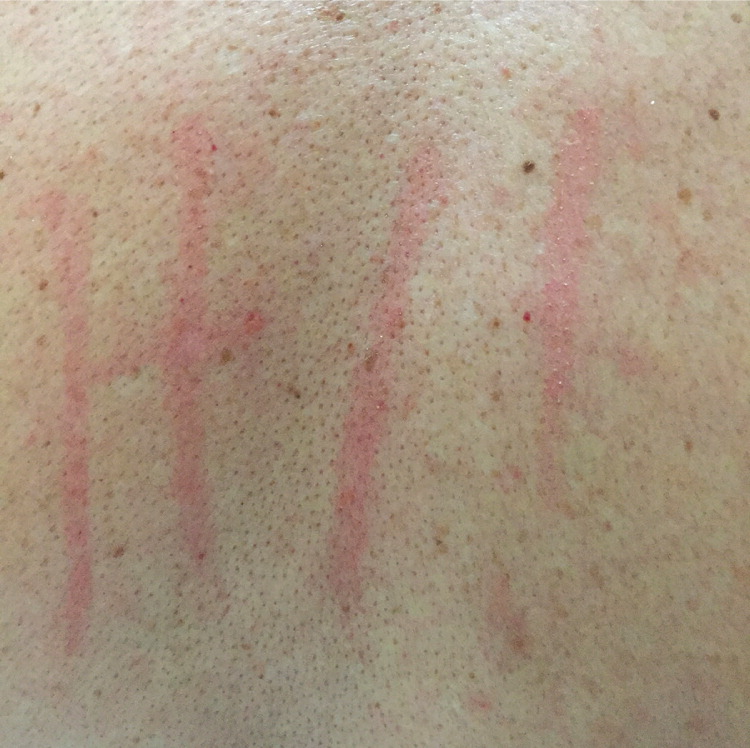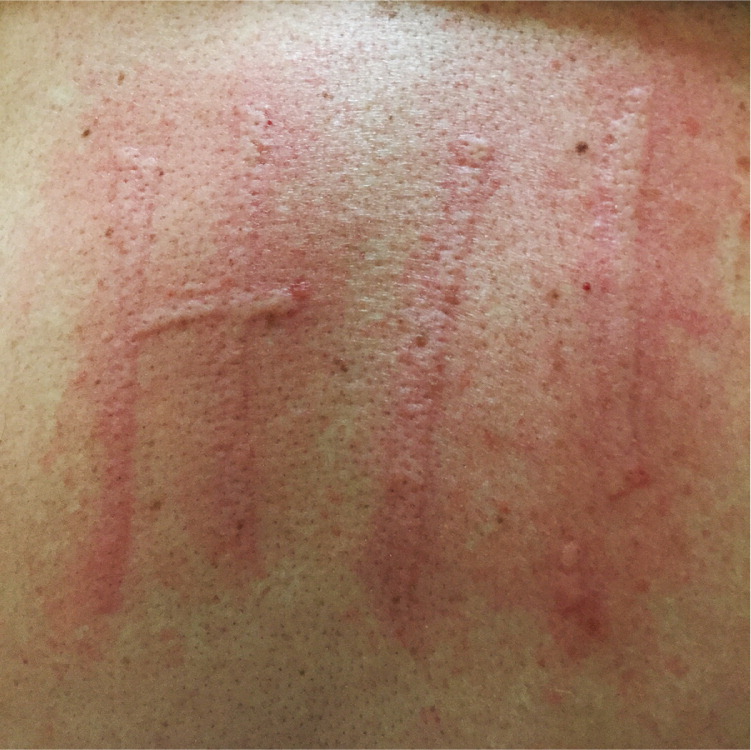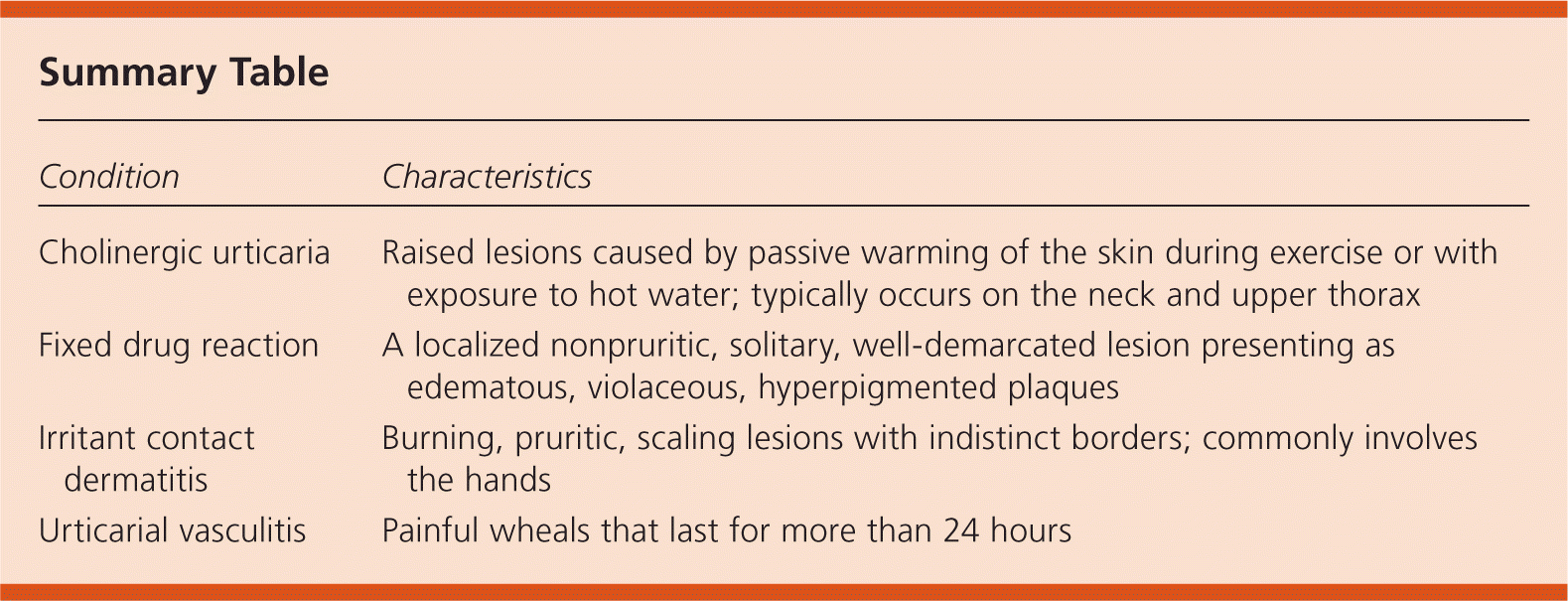
Am Fam Physician. 2016;94(9):735-736
Author disclosure: No relevant financial affiliations.
A 50-year-old man presented with a history of rashes on his back, chest, and upper extremities that appeared after physical activity, such as exercise or yard work. The rashes began five months earlier. He reported occasional itching and hives that appeared after scratching. He did not have nausea, vomiting, choking sensation, or difficulty breathing. He had not used any new lotions, soaps, cologne, or detergents. He had a history of hyperlipidemia, for which he was taking simvastatin (Zocor). His family history was unremarkable.


Question
Discussion
The answer is A: cholinergic urticaria. Symptoms typically present approximately five to 10 minutes after an inciting event, such as eating spicy foods, exercise, feeling intense emotions, or bathing in hot water. Tingling, pruritus, or a burning sensation may occur with the presence of lesions. The patient also had dermographism, which is the result of histamine release when pressure is applied to the skin.1
The diagnosis of cholinergic urticaria is clinical, based on history and physical examination findings. It can be confirmed with passive warming, using water or an exercise challenge, to reproduce symptoms.2 The patient had the classic history findings of raised lesions occurring after passive warming of the skin during exercise or activity. Lesions typically arise on the neck and upper thorax but can spread to the entire body.
The lesions usually resolve in 15 to 20 minutes unless there are multiple lesions, which may remain for hours. Management of the condition includes activity and behavioral modification, such as avoiding hot water or exercise in hot weather. Patients can use prophylactic antihistamine treatment prior to exercise or strenuous activities.
A fixed drug eruption is a localized, cutaneous reaction that occurs hours to days after a drug is ingested. Typically, lesions are nonpruritic, solitary, and well demarcated. They present as edematous, violaceous, hyperpigmented plaques. The most common causative agents include antibiotics, such as trimethoprim-sulfamethoxazole and penicillin; salicylates; nonsteroidal anti-inflammatory drugs; barbiturates; and food coloring.3 The lesions will reappear in the same location if there is a new exposure to the agent.
Irritant contact dermatitis typically presents as burning, pruritic, scaling lesions with less distinct borders than those that occur after contact with a foreign substance.4 Irritant contact dermatitis can be a result of skin injury, cytotoxic effects, or inflammation from contact with an irritant.4 A common presentation involves dry and fissured skin on the hands.
Urticarial vasculitis is a type III hypersensitivity that typically presents as painful wheals that last more than 24 hours. The lesions may develop residual hyperpigmentation or purpura. Although the cause is unknown, urticarial vasculitis may be related to rheumatologic diseases, such as lupus; use of medications, such as penicillin and nonsteroidal anti-inflammatory drugs; and viruses, such as hepatitis B and C.5

| Condition | Characteristics |
|---|---|
| Cholinergic urticaria | Raised lesions caused by passive warming of the skin during exercise or with exposure to hot water; typically occurs on the neck and upper thorax |
| Fixed drug reaction | A localized nonpruritic, solitary, well-demarcated lesion presenting as edematous, violaceous, hyperpigmented plaques |
| Irritant contact dermatitis | Burning, pruritic, scaling lesions with indistinct borders; commonly involves the hands |
| Urticarial vasculitis | Painful wheals that last for more than 24 hours |
The views expressed herein are those of the authors and do not represent the official views of the Department of Defense or the Army Medical Department.
